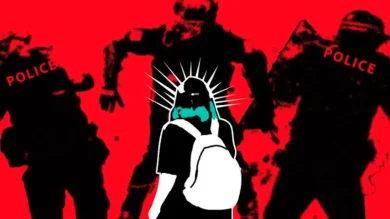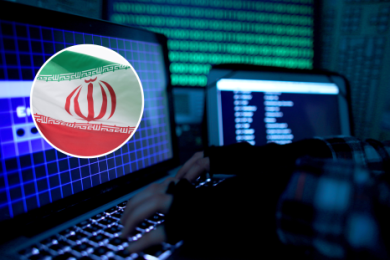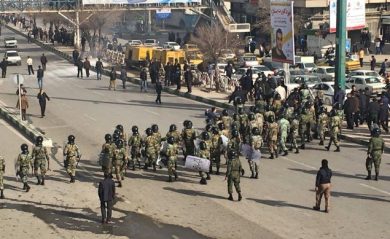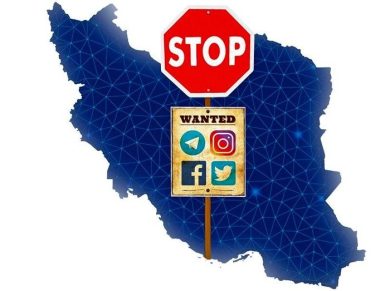In the shadow of systemic repression, Kurdish, Baloch, and Arab women in Iran are rising as powerful voices of resistance and resilience. As ethnic minorities, they face not only the broad oppression imposed on all Iranian women by the Islamic Republic and the Islamic Revolutionary Guard Corps (IRGC) but also endure layers of ethnic, cultural, and socioeconomic discrimination. Yet these women continue to challenge the regime’s structures with fierce courage—organizing, protesting, and resisting, often at great personal cost.
Their struggles are underrepresented in global narratives, but their role is critical in Iran’s broader freedom movement. This article amplifies their voices, explores the intersection of ethnic and gender oppression, and highlights how these women are shaping the future of resistance in Iran.a
1. Multiple Layers of Oppression: Ethnicity, Gender, and Class
A. Ethnic Discrimination in Iran
Iran is a diverse country made up of numerous ethnic groups. Among them, Kurds, Baloch, and Arabs have long been marginalized by the state. They face:
• Economic neglect and underinvestment in their regions.
• Suppression of cultural identity, including language and traditions.
• Discrimination in employment, education, and government representation.
B. Gender Apartheid in Minority Communities
Women from these groups are further marginalized through:
• Strict patriarchal norms reinforced by state ideology.
• Legal inequalities under Iran’s civil and penal codes.
• Limited access to education and healthcare, especially in rural and border regions.
C. The Role of the IRGC
The IRGC, which has military and administrative authority in many minority regions, plays a direct role in:
• Policing protests with brutality.
• Surveillance and harassment of activists and community leaders.
• Arbitrary arrests, especially of women involved in human rights work or political organizing.
2. Kurdish Women: Proud, Political, and Unafraid
A. History of Resistance
Kurdish women in Iran have long been politically active. From the early revolutionary years to today’s protests, they have:
• Participated in grassroots organizing and labor activism.
• Spoken out against military occupation and cultural erasure.
• Mobilized international support for Kurdish autonomy and rights.
B. The Case of Zhina (Mahsa) Amini
The death of Mahsa Amini, a 22-year-old Kurdish woman, while in custody of Iran’s morality police, ignited global outrage and triggered the “Women, Life, Freedom” movement. Her Kurdish identity was central:
• Her name, Zhina, was banned from official documents.
• Her death became a symbol of both gender and ethnic oppression.
• Kurdish cities like Sanandaj and Saqqez were among the first to rise in protest.
C. Kurdish Female Organizers
Despite violent crackdowns, Kurdish women:
• Organize student protests, cultural events, and women’s circles.
• Face routine arrests, torture, and long prison sentences.
• Continue to use digital platforms to share their stories globally.
3. Baloch Women: Brave Voices from Iran’s Most Oppressed Region
A. Life in Sistan and Baluchestan
The Baloch region suffers from some of the worst poverty, unemployment, and infrastructure neglect in the country. For women, life is even more precarious:
• Many lack citizenship documents, making access to education and healthcare difficult.
• Child marriages and domestic violence are prevalent, and legal support is minimal.
• State forces, especially the IRGC, maintain a constant presence.
B. Women in Protest Movements
In recent years, Baloch women have emerged as powerful protestors:
• They protest against state killings, such as the massacre in Zahedan in 2022.
• They demand justice for victims of state violence, often their sons, husbands, and brothers.
• They mobilize online with hashtags and underground networks.
C. Repression by the IRGC
The IRGC’s crackdown in Balochistan includes:
• Indiscriminate shootings during peaceful protests.
• Surveillance and punishment of women who speak to foreign media.
• Arbitrary detentions, especially of women suspected of activism.
4. Arab Women of Khuzestan: Resistance Amid Environmental and Political Crisis
A. Struggles in Khuzestan Province
The Arab population of Khuzestan faces a complex set of issues:
• Environmental degradation due to state mismanagement and oil exploitation.
• Water shortages leading to mass protests.
• Language bans and erosion of Arab cultural identity.
Women in Khuzestan carry a double burden:
• They are impacted by the regime’s gender restrictions.
• They are often punished for their ethnic activism, particularly when they challenge land confiscation or cultural discrimination.
B. The Role of Arab Women in Protests
In 2021 and 2022, Arab women in Khuzestan:
• Led protests against water mismanagement and militarization.
• Provided food and shelter to protestors, turning homes into resistance hubs.
• Were detained and disappeared by the IRGC, some without trial or formal charges.
5. Voices from the Ground: Testimonies of Resistance
A. Anonymous Kurdish Activist
“We are not just women; we are Kurdish women. That means we are born into resistance. Every time we speak our language or refuse to wear hijab, it’s rebellion.”
B. Baloch Mother in Zahedan
“They shot my son in the street. I carry his photo at every protest. They can take our land, but they cannot take our voices.”
C. Arab Student in Ahvaz
“At university, they mock our accent. On the streets, they arrest us for asking for water. But still, we raise our fists and chant: freedom!”
These stories reflect the depth of repression, but also the power of collective resistance led by women who are culturally proud and politically aware.
6. The Role of Global Solidarity
Women from Kurdish, Baloch, and Arab communities need:
• International media attention to amplify their stories.
• Legal advocacy and human rights reporting to document abuses by the IRGC.
• Diaspora solidarity networks to support women fleeing persecution.
• Digital safety tools to protect activists from cyber surveillance.
International feminist movements must embrace the intersection of gender and ethnic liberation, standing with Iran’s most marginalized women.
7. The Road Ahead: Inclusion in Iran’s Future
A truly free and democratic Iran must:
• Recognize ethnic diversity as a strength.
• Ensure cultural rights, including language, dress, and tradition.
• Include women from all ethnic groups in leadership roles during political transition.
Women from the margins are leading movements, shaping discourse, and redefining what it means to be Iranian. Their vision is inclusive, just, and powerful.
Conclusion: United in Struggle
Kurdish, Baloch, and Arab women in Iran are not victims—they are leaders in a fight for justice, dignity, and freedom. Despite being targeted by the IRGC for both their gender and ethnic identity, they continue to rise. Their voices demand to be heard, and their stories must be amplified.
The future of Iran’s liberation is intersectional—and it is already being shaped by these sisters in struggle.
Join Our Newsletter!
Stay informed with the latest updates, news, and ways to take action in the fight for justice and global security. Sign up now to get updates delivered straight to your inbox!





